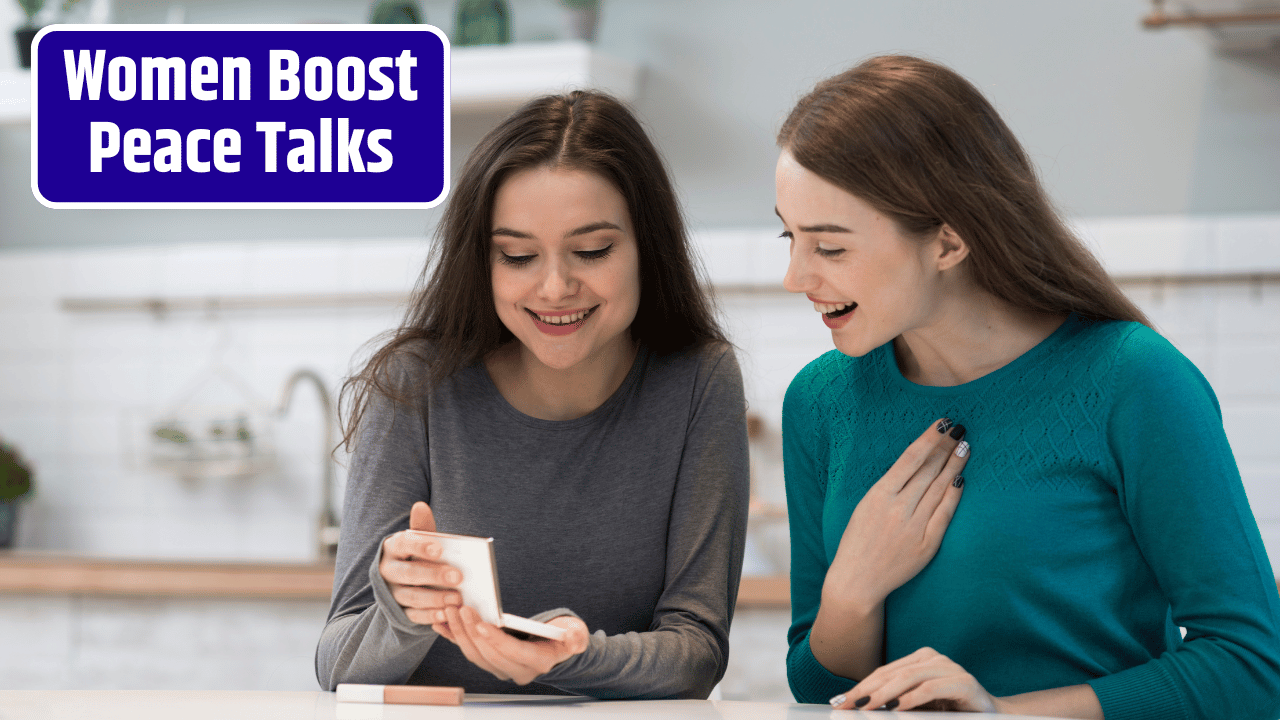You’ve heard the war stories — the generals, the treaties, the strongmen shaking hands under banners that promise “peace.”
But here’s the thing: real peace doesn’t begin with a signature. It begins with a voice.
And more often than not, that voice belongs to a woman who refused to stay silent.
For too long, the story of conflict resolution has been told through a narrow lens — one that sees peace as something negotiated between the powerful and the armed. But now, the script is changing. The people who’ve been kept out of the room are walking in — or kicking down the door, if necessary.
This is the rise of women-led peacebuilding — not as a trend, but as a new global reality.
Table of Contents
Why Women? Because They’ve Been Doing It All Along
Let’s be clear: women didn’t suddenly start building peace when the U.N. told them they could.
They’ve been:
- mediating tribal disputes in South Sudan,
- smuggling books for girls in Taliban-controlled Afghanistan,
- organizing ceasefires in Colombia,
- and forming networks of survivors in the DRC to demand justice from a broken legal system.
They’ve done this without formal power, without funding, without protection — and in most cases, without credit.
So the question isn’t “Can women lead peace?”
It’s “How the hell did we get this far without them in charge?”
Peace Looks Different When Women Build It
This isn’t just about fairness — it’s about function. Peace led by women is often more inclusive, more durable, and more rooted in reality.
Because when women lead peace processes, they bring:
- Lived experience of what conflict does to families and communities
- Broader priorities, like healthcare, education, and reconciliation
- Community legitimacy, not just political titles
- A focus on restoration over retribution
It’s a model that doesn’t just silence the guns — it addresses why they were fired in the first place.
What the Numbers Say
| Statistic | Source |
|---|---|
| 35% more likely for peace agreements to last 15+ years when women are involved | UN Women |
| Less than 8% of negotiators in major peace processes are women | Council on Foreign Relations |
| Only 1% of global peace funding goes to women-led local organizations | OECD, 2023 |
Translation: women do more with less — and they do it better. But they’re still kept at the margins.
Meet the Women Already Leading the Way
Let’s name names — because these aren’t anonymous forces. They’re people with stories, courage, and strategy.
Leymah Gbowee – Led a coalition of Christian and Muslim women in Liberia who forced warlords into a peace agreement using prayer, protest, and a well-timed sex strike.
Rita Lopidia – In South Sudan, she’s worked for over a decade to include women in national peace talks — and trained over 400 local women mediators.
Radhika Coomaraswamy – As the first U.N. Special Rapporteur on Violence Against Women, she helped shape international law around conflict-related sexual violence.
Ouided Bouchamaoui – Played a central role in Tunisia’s democratic transition, helping form the Tunisian National Dialogue Quartet — which won the Nobel Peace Prize in 2015.
These aren’t exceptions. They’re blueprints.
But Let’s Not Pretend It’s Easy
The road to peace is hard. The road to peace as a woman? Brutal.
Women peacebuilders regularly face:
- Threats and violence from all sides of a conflict
- Exclusion from formal processes, even when they’re already doing the work
- Cultural backlash for speaking publicly or asserting leadership
- Lack of funding and political support (because apparently saving countries doesn’t qualify for a grant)
And yet, they stay in the fight. Not because it’s glamorous — because it’s necessary.
The Future Is Already Here — If We Let It Be
The idea that women’s leadership in conflict resolution is “new” or “experimental” is dead wrong. It’s working right now. The challenge is scaling it.
What needs to happen?
- Make women’s participation mandatory in peace processes — not “nice to have”
- Directly fund grassroots women’s groups, not just large NGOs with shiny offices
- Protect women peacebuilders — legally, physically, digitally
- Redefine security to include schools, food, healthcare, and healing — not just soldiers
Because the future of peace isn’t about better weapons. It’s about better leadership — the kind that listens, restores, and builds.
FAQs
Is this about feminism or peace?
It’s about both. You can’t build real peace by excluding half the population. Period.
Aren’t women already involved in peace work behind the scenes?
Yes — and that’s the problem. They’ve done the heavy lifting without power or visibility. This campaign is about moving them into the spotlight.
What if local customs don’t support women in leadership roles?
Culture can evolve — especially when peace is on the line. Many women lead in informal roles first, then gain formal influence through impact.
How can I support women in peacebuilding?
Fund their work. Share their stories. Push your government to back women-led diplomacy. Don’t let them be invisible.














